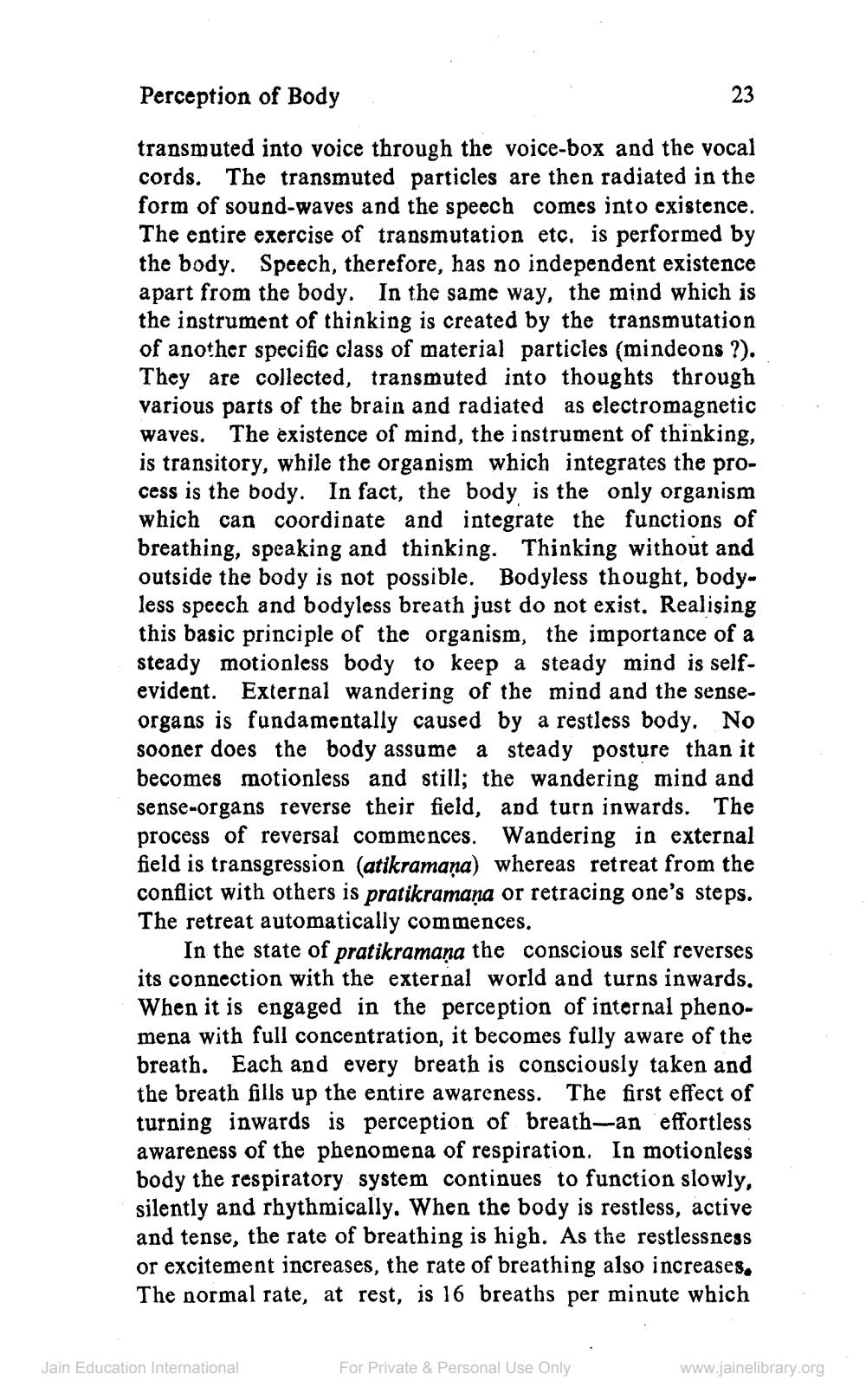________________
Perception of Body
23
transmuted into voice through the voice-box and the vocal cords. The transmuted particles are then radiated in the form of sound-waves and the speech comes into existence. The entire exercise of transmutation etc, is performed by the body. Speech, therefore, has no independent existence apart from the body. In the same way, the mind which is the instrument of thinking is created by the transmutation of another specific class of material particles (mindeons ?). They are collected, transmuted into thoughts through various parts of the brain and radiated as electromagnetic waves. The existence of mind, the instrument of thinking, is transitory, while the organism which integrates the process is the body. In fact, the body is the only organism which can coordinate and integrate the functions of breathing, speaking and thinking. Thinking without and outside the body is not possible. Bodyless thought, bodyless speech and bodyless breath just do not exist. Realising this basic principle of the organism, the importance of a steady motionless body to keep a steady mind is selfevident. External wandering of the mind and the senseorgans is fundamentally caused by a restless body. No sooner does the body assume a steady posture than it becomes motionless and still; the wandering mind and sense-organs reverse their field, and turn inwards. The process of reversal commences. Wandering in external field is transgression (atikramana) whereas retreat from the conflict with others is pratikramana or retracing one's steps. The retreat automatically commences.
In the state of pratikramana the conscious self reverses its connection with the external world and turns inwards. When it is engaged in the perception of internal phenomena with full concentration, it becomes fully aware of the breath. Each and every breath is consciously taken and the breath fills up the entire awareness. The first effect of turning inwards is perception of breath-an effortless awareness of the phenomena of respiration. In motionless body the respiratory system continues to function slowly, silently and rhythmically. When the body is restless, active and tense, the rate of breathing is high. As the restlessness or excitement increases, the rate of breathing also increases, The normal rate, at rest, is 16 breaths per minute which
Jain Education International
For Private & Personal Use Only
www.jainelibrary.org




